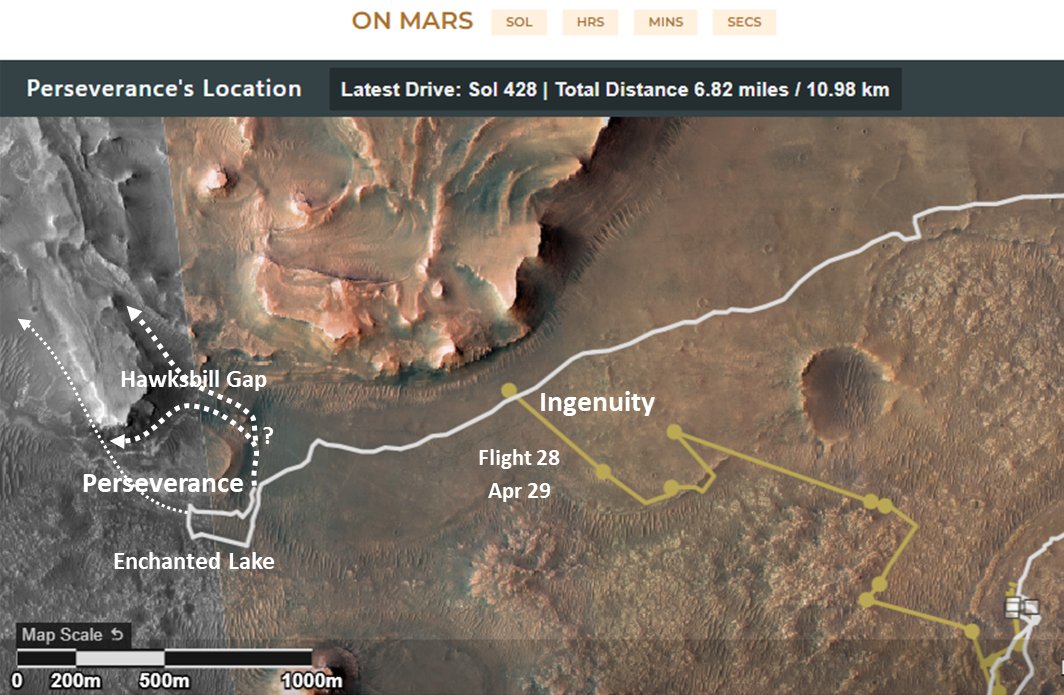
Around May 24, JWST sustained a dust-sized micrometeroid impact to its primary mirror segment C3. Initial assessment shows that the telescope's performance remains above all mission requirements although there is a marginally detectable effect in its data.
1/
1/

The size of the micrometeroid and the physical nature of the damage are not clear from the report. JWST does not have cameras to observe such damage. The impact of the micrometeroid is judged based on its effect on image quality.
2/
2/
Such micrometeroid events are expected and have been simulated and tested on the ground. Since launch, there have been 4 smaller measurable micrometeoroid strikes; the latest one is larger than the degradation predictions assumed by JWST engineers.
3/
3/

The effect of such damage on this large telescope can be mitigated by adjusting the affected mirror and via post-processing of image data. Engineers have already performed such an adjustment; additional mirror adjustments are planned to fine tune this correction.
4/
4/
This event has not affected JWST’s operations schedule as the team continues to check out the science instruments’ observing modes and prepares for the release of Webb’s first images and the start of science operations.
blogs.nasa.gov/webb/2022/06/0…
5/
blogs.nasa.gov/webb/2022/06/0…
5/
This is a pic of a section of a solar panel from the Hubble Space Telescope, which was brought back to earth after the repair mission in 1993. The panel had 100s of impact craters, ranging from microns to millimetres in diameter, after 2 years in space.
esa.int/Safety_Securit…
6/
esa.int/Safety_Securit…
6/

To be clear, Hubble operates in a very different space debris and micrometeroid environment than JWST. The Low Earth Orbit region has lot more objects of human origin such as satellite parts, debris from ASAT tests and satellite collisions, even paint flecks.
@aussiastronomer
7/
@aussiastronomer
7/

For a quick summary of the looming problem of space debris around earth and how it threatens the use of space and life on earth, check out this article at ft.com which also has some stunning graphics to illustrate the issues.
8/
https://twitter.com/samjoiner/status/1534462493413744640
8/
Clarification on the Hubble Space Telescope solar panel image above - that panel was brought down after repair mission 3B in 2002, not in 1993. The panel had spent over 9 years in low orbit space. The stmt about 100s of impact craters was true for the panel in 1993 as well.
9/
9/
Insights from Lee Feinberg himself, who oversees the JWST program, out of Goddard. #Webb was designed to handle the impact of micrometeors.
10/
https://twitter.com/leefeinberg1/status/1534699579165356034
10/
Interesting bit of insight about how the micrometeoroid impact on JWST mirror segment C3 will not affect JWST NIRCam coronagraphy.
The Lyot stop, located near the pupil, blocks all light except from the white areas.
11/
The Lyot stop, located near the pupil, blocks all light except from the white areas.
https://twitter.com/AstroJarron/status/1534935769563168770
11/
Here is another pic of the JWST primary mirror with labeled mirror segments and the (stowed) struts that create diffraction effects during observations.
Source: jwst-docs.stsci.edu/jwst-observato…
12/
Source: jwst-docs.stsci.edu/jwst-observato…
12/

At least, JWST does not have to perform evasive maneuvers like these 🤔
@ProfHughLewis @planet4589 @e_astronomer
13/
@ProfHughLewis @planet4589 @e_astronomer
https://twitter.com/esa_swarm/status/1534811284172165121
13/
Also, see this paper by Prof. Andy Lawrence and other luminaries on the looming threat of space debris and on the advocacy for space environmentalism.
14/
https://twitter.com/akaschs/status/1531608441017577473
14/
• • •
Missing some Tweet in this thread? You can try to
force a refresh













